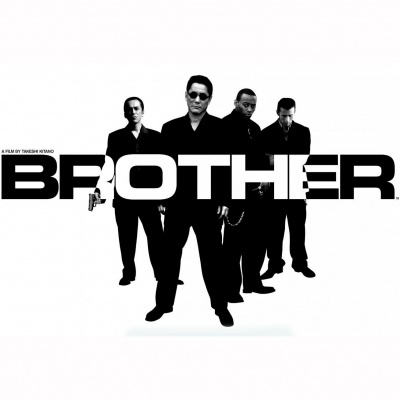
Brother
by Stephen HowellBrothers Angus and Hamish Richardson grew up in the Australian town of Bathurst. Their home was always filled with music, whether someone was practicing an instrument or playing a record on the stereo. The Richardsons took up instruments associated with rock & roll, as well as those related to traditional music. Angus began playing the didgeridoo and guitar and Hamish picked up the bass, while both knew their way around the bagpipes. Since forming their band Brother in the early 90s, they have started their own record label and have toured the world extensively, being bestowed with the title of Jimi Hendrix with bagpipes by the publication Buzz Weekly. Besides a cross-pollination of musical styles, Brother has also gained notoriety with their alternative stage presence, wearing leather kilts and occasionally donning nail polish. As Angus and Hamish Richardson fine-tuned their instrumental skills, they traveled into Sydney, Australia, where they performed at various pubs. It was there in 1991 that they met drummer Roel Kuiper and guitarist Steve Luxenberg. Kuiper, who was originally from Holland, drew inspiration from rock & roll and world music. The diverse tastes of the musicians, which ran the gamut from Abba to Elvis to classical, melded well. It was established that the foursome should form a band. They figured that the name Brother would work well since Angus and Hamish co-founded the group. When 1992 arrived, Brother had started the Rhubarb Records label and self-produced their first album, Black and White. The cassette-only release was sold on the bands first tour opening for guitarist Joe Walsh in 1993. Black and White featured the groups knack to create a world pop sound. As 1994 set in, Brother returned to their roots music. They released their second full-length album, Pipe Dreams, showcasing the traditional pieces they had performed in Australias pubs a few years earlier. Diversity was the key to the Brothers 1995 album, Exit From Screechville. The band toned down the street-busking feel of their prior effort in favor of a hybrid of the traditional music on Pipe Dreams and the pop of Black and White. The producers of the major motion picture Baraka heard the album and enjoyed Brothers reworking of the folk song An Daorach Bheag so much that they decided to include the track in their film. Over the next few years, Brother continued to alter and experiment with their sound. This was evidenced by a string of albums, which included 1996s Black Stone Tramp, 1997s The Digging Bone, and 1998s Your Backyard. The band was moving in a more groove-oriented direction, while they toured with the likes of Bur and Dalbo. Noted for their energetic live shows, Brother decided to record an April 7, 2000, concert performance at the Coach House, located in San Juan Capistrano, CA. The set consisted of some of the bands better-known songs, including thetimeisnow from The Digging Bone, The Crow from Pipe Dreams, and Blackest of Blue from Black Stone Tramp. The record titled This Way Up was released that June. Luxenberg decided to leave the band following the release in order to work on solo recordings. Kuipers old roommate, Rick Kurek, took over the guitar slot. After only two rehearsals with the band, Kurek was preparing to tour with the group. After Brother regrouped, they set out for their long-awaited tour in support of This Way Up in March of 2001. The first leg of their journey took them from the Midwestern United States all the way to California. As the second leg of the tour got underway at the end of May, the band was honored with the privilege of performing at Cleveland, OHs Rock and Roll Hall of Fame with hard rock band Linkin Park and singer/songwriter Alicia Keys. Brother also performed at Milwaukees Summerfest on the tour, where they out-drew all of the festivals headliners in attendance numbers.
